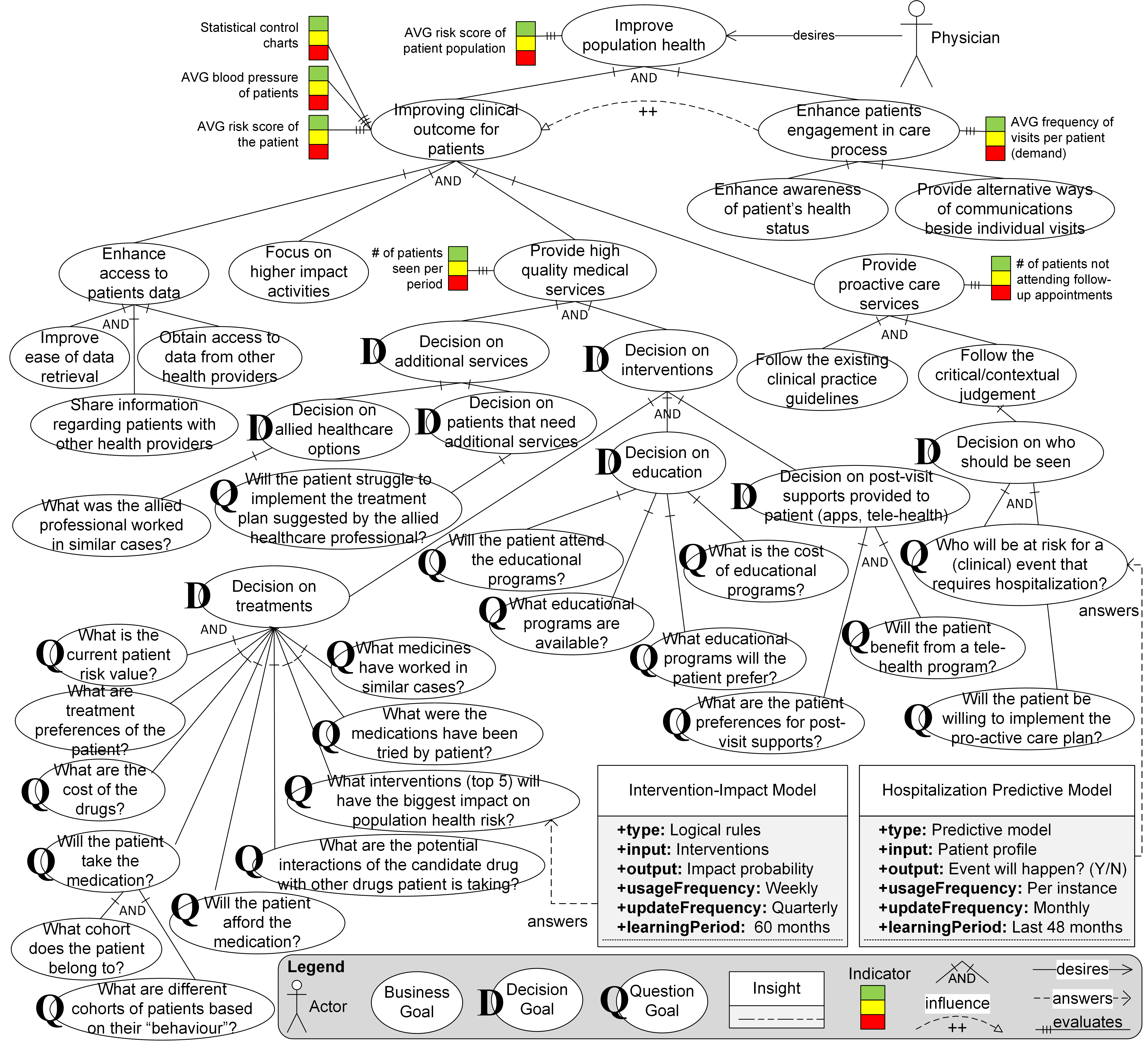Objectives of the Business View
Understanding the elements of the Business View
| Type of Element | Description |
|---|---|
| Strategic Goals | Symbolize business objectives and strategies. |
| Decision Goals | Represent situations where an Actor needs to select one option among a set of possibilities. They symbolize the decisions that are (or will be) supported by the machine learning and analytics system. |
| Question Goals | Represent the ‘‘needs-to-know’’ of the Actors during decision processes. For each Question Goal the Type, Topic, Tense, and Frequency attributes are specified. |
| Insights | Insight elements translate business questions into data mining or machine learning problems. An Insight element represents the outcome of a machine learning task. It symbolizes a generalization that is learned and extracted from the data. Insights are modeled in terms of Type, Input, Output, Usage Frequency, Update Frequency, and Learning Period. The Input of an Insight specifies what data would be used by the machine learning algorithms for creating (i.e., training) the Insight and for querying it at runtime. The Output of an Insight shows what an Insight element would generate at runtime |
| Indicators | Represent numeric metrics that measure and monitor performance with regard to some objectives. |
| Situations and their links | Situations represent factors that can influence the achievement of strategic goals in a favorable or unfavorable way. They refer to partial state of affairs (partial model of the world) and can be internal or external to the business. |
Question goals are broken down into further types of Question goal attributes: Type, Topic, Tense, and Frequency. The table below breaks down these attributes.
| Type of attribute | Description |
|---|---|
| Question Type | Denotes the question phrase (what, who, when, where, why, how). |
| Question Topic | Captures the focus of analysis and reveals related parts of enterprise data stores for the problem at hand. |
| Question Tense | (Past, present, future) represents the temporal aspect of the focus of the analysis. In many cases, specifying the tense facilitates finding a family of analytics techniques that is most relevant to the business needs. |
| Question Frequency | Indicates how frequent the corresponding actors need an answer for the Question Goal. |
Constructing the Business View Model
Step 1: Identify the Strategic Goals and their Influences
Step 2: Identify performance Indicators and link to Strategic Goals.
Step 3: Identify Decision Goals
Step 4: Identify Question Goals
Step 5: Specify Insight elements and identify what kinds of answers are needed for the Question Goals to be satisfied
Example of Business View Modelling in Practice
Below is an example illustrating a Business View Model based on the incremental steps and example provided in the links above.
